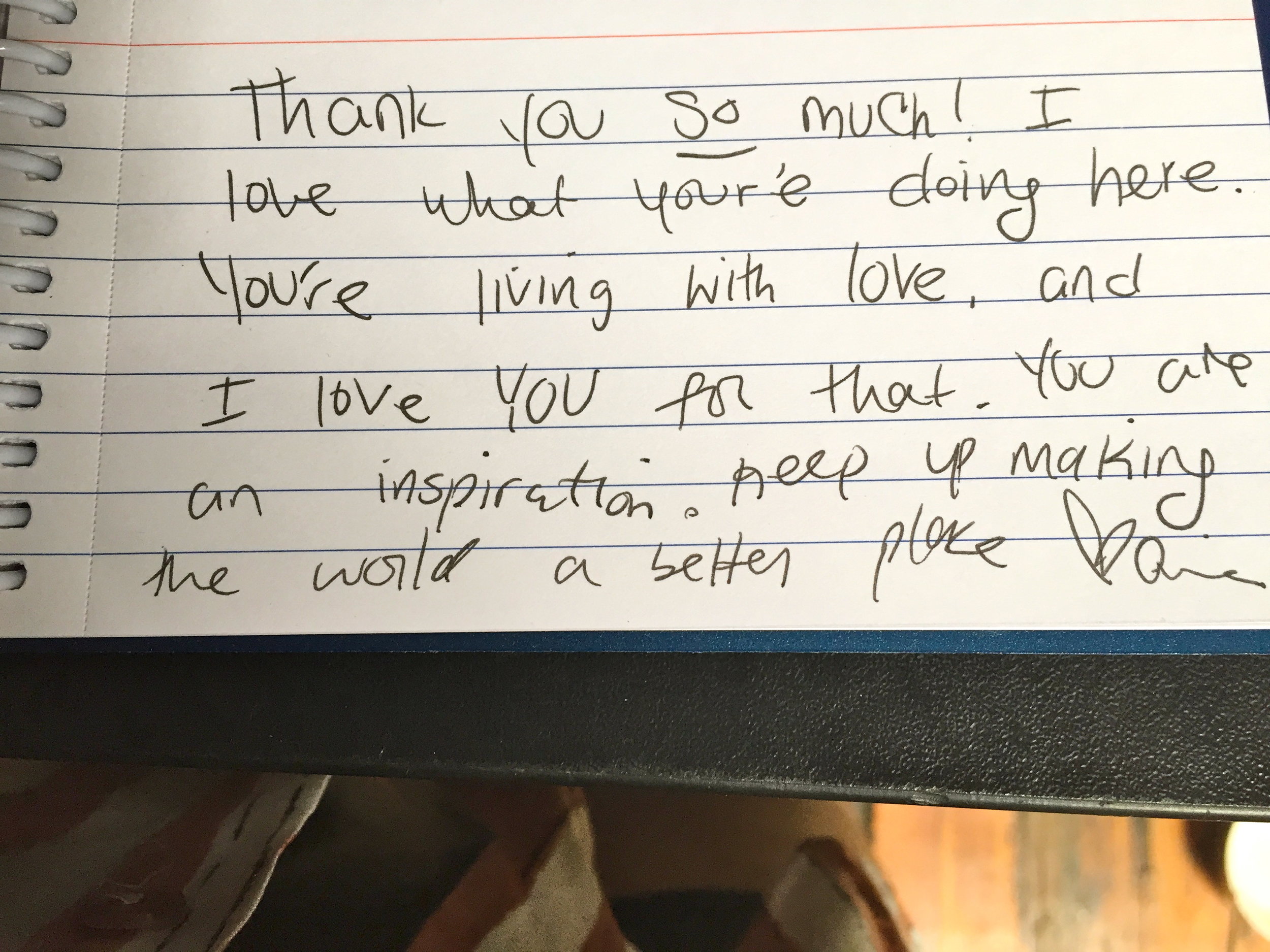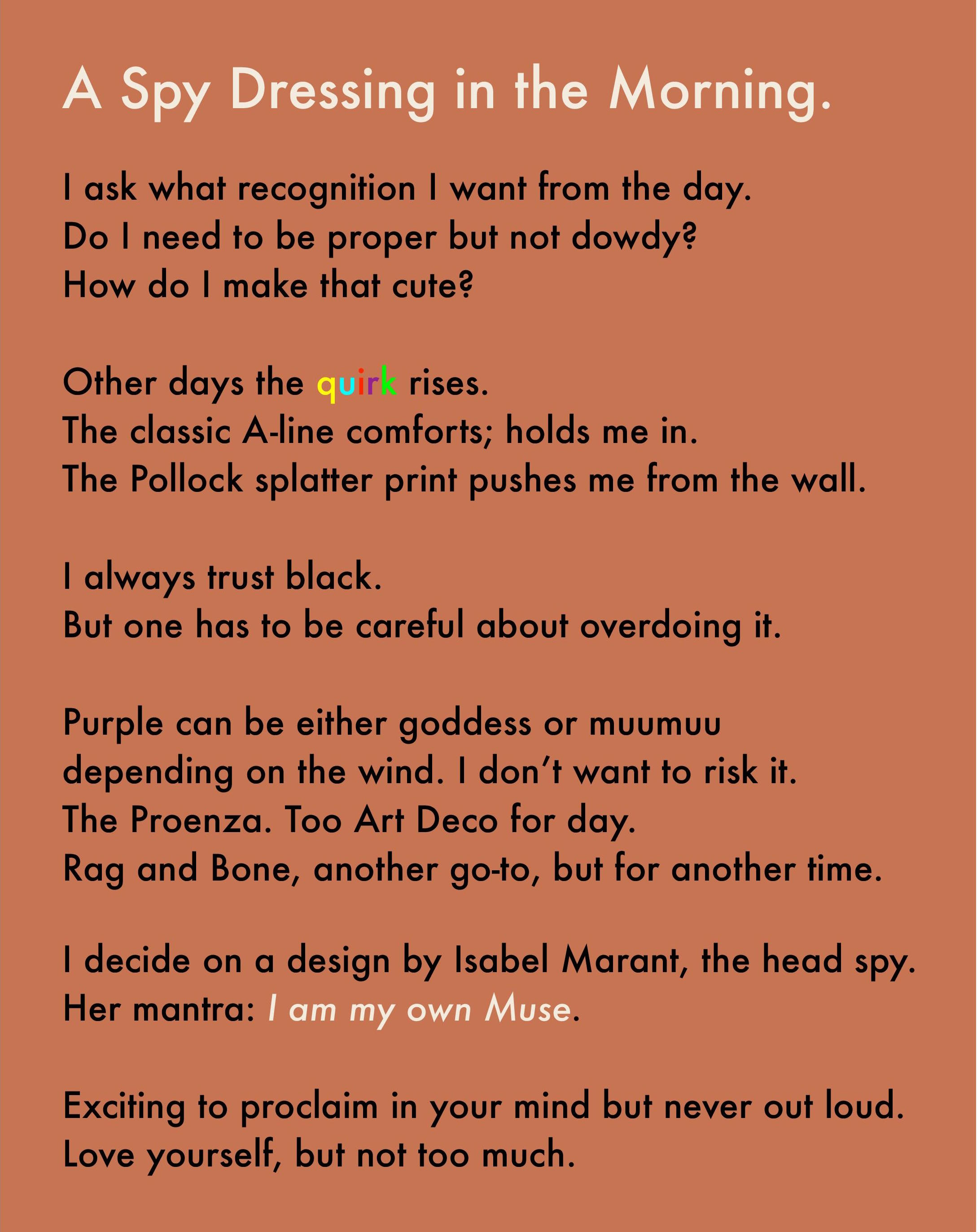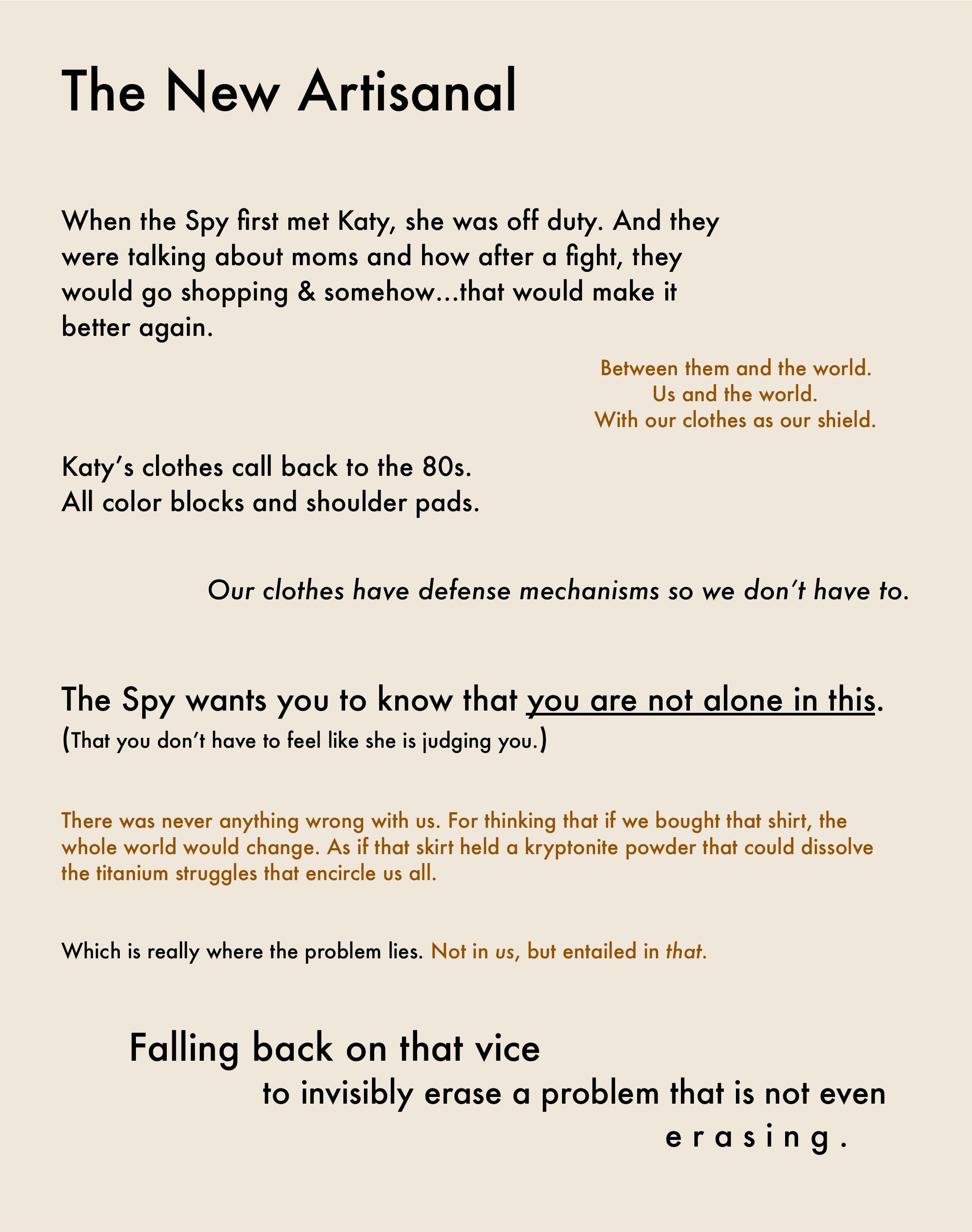CONSUME(s) ME
CONSUME(s) ME is an ongoing, multi-faceted project that explores the ethical problems of the fashion industry. The choice of title reveals multiplicities of the word ‘consume’ and articulates my role as artist in witnessing consumption on a grand scale while referencing how my own consumption choices reveal my performance of self throughout this same work.
What started out as a documentary film has become a series of clothing swap events in public spaces and galleries and, most recently, text-based explorations. In the past, my writing and video practice were separate entities but CONSUME(s) ME has shown me a new way to work as I began to see how the two disciplines operate in relation to one another. The swaps were a mode of research, but the focus began to shift and they became more like installations. This aspect of the project opened up my practice as one that reveals process and research to create experiential interactions that culminate in the final work.
I have interacted with the public and documented the exchange. I have activated space to highlight, barter, and negate the exchange of money as an artist. The clothing swaps have evolved from a place of research to a space of performative writing as I work on the project manuscript as the protagonist character of the Shopgirl during the public swapping hours. This text is the narrative of the investigation.
The other ephemera, (video interviews, influential texts & experiences, images/writings/audio from the swaps) are to be annotated in a bibliographical archive on the web. Some of those resources are highlighted in the ‘Reading List’ portion of this issue of FSJ.
Project Origins
CONSUME(s) ME was born out of a conversation following a clothing swap I co-hosted with a friend. We were satisfied and congratulating ourselves for throwing a good party. My friend called me the ‘queen of clothing swaps’ and the statement stuck with me.
It was the first year since I had moved back to New York from Portland and I was in a bit of a daze. I had just made a short film and I was creatively and emotionally exhausted.
Shortly before the clothing swap, I had been out to lunch with a successful filmmaker friend who encouraged me to try a documentary. Just a short one. All I needed was a camera and a subject. I had the camera, but the subject part stymied me.
I felt like I was out of “story.” My filmmaker friend kept reiterating, just look for something you love. If you love something enough, you will not want to stop talking about it. Filming it will be easy.
Basking in the afterglow of that successful clothing swap, it struck me that this satisfaction felt something like love.
It has taken me a long time to admit that. How deeply rooted this project is in love.
Around that same time, I was spending a lot of time at a vintage shop called Collect Her, in Bed Stuy where I was living, hanging out with the owner, Shana Jackson. We had met at the Brooklyn Flea the summer I returned to NY. I bought a t-shirt dress from her booth (one of her original designs). Determined to show me how well the piece would hang on my body, she shielded me with her massive shawl as I stripped down to basically nothing in the middle of this street fair. As I tried to take off my top while covering my breasts, Shana replied, “Stop your fussing, it’s not like you got anything I have never seen before.”
Cat's film from her clothing swap with Shana, held at Shana's now-closed shop, Collect Her, on Hancock Place in Brooklyn. Video courtesy the author.
As I left wearing this dress that I always remember as making me feel sort of naked but in a way that felt free, she mentioned that usually she held court in her boutique on Sundays where she sold vintage clothing in person and online. On Sunday, all the dresses were $25 and she usually made mimosas. Come on by!
Her store was only a few blocks away from my house so I started going. To try on clothes, yes, and to buy clothes sometimes, but I mostly went for the conversation.
As a gentrifier to Bed Stuy, I realized I had a choice to either be ambivalent about that status or actively be a neighbor. On my block, I stopped and talked to the neighbors when it was warm and people were outside. Our house made food and hung out at the block parties where children threw water balloons on our feet because we asked them to. Once off our street, however, the racial divide returned until I started hanging out at Collect Her. After a few afternoons there, there were more people in my neighborhood to smile at and it was all because we watched each other trying on clothes while we complained about our lovers and landlords.
Meanwhile, the search for narrative in my swap habit was unfolding as obvious and not at all obvious at the same time. I had been a participant and instigator of clothing swaps for close to twelve years. A hamper for swap clothes stood next to the laundry hamper in my closet, my personal textile stash as a sort of capital, as if this was natural for everyone. Yet it’s not; Ashley’s comment reminded me of that. I decided to make a short film that collected narratives about women and their clothes and I was going to do that by filming clothing swaps.
One Sunday, I told Shana this idea and she suggested that we hold a swap in her space so I could film. In retrospect, that offer represented the common ground we shared which centered around the almighty “hustle.” The thing that I feel like I shared with all the subjects I became close to through the course of this initial research was an acknowledgment of the fact that we wanted to work for ourselves, be as independent as possible through the labors of our creative work.
Shana got my hustle and I got hers, and above is the video that I made out of the swap we threw in her now closed space on Hancock Pl. After that, I was introduced to one person who introduced me to another and that drove me down a rabbit hole of other narratives that explored the ethical problems of the fashion industry.










Project Outcomes
The role that text plays in this project became apparent to me after I did the CONSUME (s) ME installation with focus on the retail space in 2015 at the Recess gallery. During that event, where I adopted the character of Shopgirl and used writing as performative investigation, I started to have sensorial recognition memories about working in a bookstore in high school/college and how much of the in between time spent in the store between opening and closing was spent writing poetry.
These memories made the transparent act of writing equally, if not more, risky than the act of creating a faux “retail” space for barter. My interactions with participants from the street became more dynamic as we were both decentered. My balance was regained only by becoming the Shopgirl character, acting as both a beacon of capitalism while also being a product of it, which made me feel like a spy negotiating the balance of perspective allegiance.
My interpretation of this in the making of CONSUME(s) ME is accepting that myself as a body had to participate in all these interactions (through the investigation, the instigated events, and just life) to create something new and articulate what I learned and wish I knew before I started. I am thinking about a statement from poet/theorist Fred Moten’s 2016 lecture (ironically titled) “Blur & Breathe”, where he challenges himself, “To think outside the standpoint of having a standpoint.”
This text is a document of me taking on a similar challenge, standing pointless, wanting to have a conversation.





CONSUME(s) ME is a project that consistently brings up questions about feminism. Many people have asked me, “How can I be interested in clothes and consider myself a feminist?” Ironically, this work has made me analyze my own feminism for the same reason and the binaries that are currently putting feminism into question. My strategy in the writing portion of this project, the manuscript, the ongoing narrative, is to blur and dissect the multiple ways rhetorical language restrains a political space.
This desire to blur feels like the only strategy to counteract the current space of intersectional discourse where neo liberal feminism is at loggerheads with a Marxist feminist perspective that enables feminism to be seen from a transnational lens. The blurring feels consistent to what I understand as the base of what intersectionality has always been, since its introduction in the late 80’s, as one that is articulated through perspective and modality as a ‘traveling theory.’
Editor's Note: Below are two excerpts from the manuscript portion of CONSUME(s) ME, Cat’s poetic narrativization of her experience with this project.



